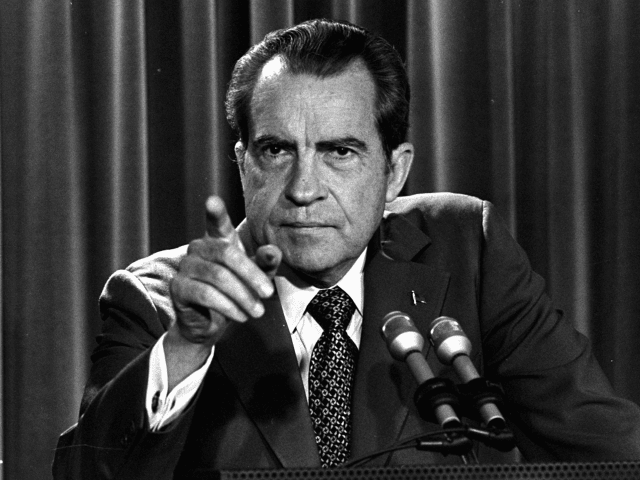At 2:00 AM on March 11, Americans complied for the 44th year with President Richard Milhouse Nixon’s still controversial “Emergency Daylight Saving Time Energy Conservation Act.”
The “Act to preserve daylight and provide standard time for the United States” was first passed by President Woodrow Wilson beginning on March 31, 1918 as strategy to maximize productive sunlight working hours during World War I. But with the end of the war, Congress override President Wilson’s veto to kill the wildly unpopular federal action.
President Franklin Delano Roosevelt instituted a year-round Daylight Savings “War Time” from 1942 to 1945, but Congress dumped the unpopular law at the end of World War II.
Richard Nixon successfully campaigned against the power and intrusiveness of FDR’s big government in his 1968 run for the presidency. But in his first State of the Union Address, he introduced a 37-point environmental manifesto that set goals ranging from monitoring motor vehicle emissions standards to halting all dumping in the Great Lakes. Nixon passed a dizzying array of environmental legislation, including establishing the Environmental Protection Agency as a new and independent agency.
Nixon then led a historic federal intervention into the American economy when he imposed widespread wage and price freezes, and then ended the convertibility of the dollar into gold by floating the exchange rate of the currency in 1971. To justify his interventions in the economy, Nixon said in August 1971, “We are all Keynesians now.”
The Nixon sdministration took credit for his Keynesian policies pushing down the price of crude oil to a 25-year low of $2.90 a barrel in July 1973. But then all hell broke loose in October, when members of the Organization of Arab Petroleum Exporting Countries (OPEC) announced a retaliatory oil export embargo during the 1973 Arab-Israeli War.
With the price of crude oil quadrupling to $11.65 a barrel and Americans waiting in long lines during the gasoline shortage, President Nixon and the Democrat-controlled Congress, desperate to look effective, passed the “Emergency Daylight Saving Time Energy Conservation Act” on December 15, 1973.
President Nixon personally promised year-round daylight-saving time would produce substantial “energy saving in electrical power consumption and the unnecessary use of electric lights.” Liberal Democrats rewarded Republican President Nixon for championing their interventionist agenda by impeaching him three months later.
Congress has made only modest changes to the supposed emergency measure over the last four decades. But under current law, U.S. Daylight Savings Time begins at 2:00 a.m. on the second Sunday of March, and ends at 2:00 a.m. on the first Sunday of November.
The most important analysis regarding the effectiveness of DST regarding energy use is a 2008 National Bureau of Economic Research study that found “contrary to the policy’s intent — DST increases residential electricity demand” by about 1 percent. Although DST reduced demand for lighting, demand for heating and cooling dramatically increased.
Many health and safety experts also have a negative opinion of Daylight Savings Time. According to the “Fatal Accident Reporting System,” there is a 17 percent increase in traffic fatalities on the Monday after the shift and fatal motor vehicle accidents remained elevated for the first six days after the clocks spring ahead. A recent medical study indicates that DST time change may also increase the risk of stroke due to sleep disturbances.

COMMENTS
Please let us know if you're having issues with commenting.